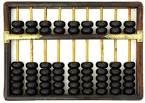OUTPUT DEVICES
An
output device is a peripheral device that allows a computer to communicate
information to humans or another machine by accepting data from the computer
and transforming them into two categories.
(i)
Output
that can be readily understood and used by humans.
(ii)
Output
to secondary storage devices that hold the data to be used as input for further
processing by computer.
Output that can
be understood by humans can be in the form of hard copy or soft copy.
HARD COPY
It is output on
paper and can be read immediately or stored and read later. This is a
relatively stable and permanent form of output.
SOFT COPY
It is usually a
screen – displayed output. It is a transient form of output and is lost when
the computer is turned off.
Devices
confirming to above specifications are classified as follow:
(A)
Soft
copy
(i) Virtual; graphic card, VDU (Visual
Display Unit)/ Monitor, projector etc.
(ii) Sound; sound card, speaker,
computer speech synthesis etc.
(B)
Hard
copy
(i)
Printer; impact printers etc.
(ii)
Daisy wheel printers; non – impact printer.
(iii)
Plotter.
SOFT COPY DEVICES
An output on soft copy devices enables
viewing of the work that allows corrections or rearrangement of material to
suit specific needs. It also includes the device for voice and sound output,
the speaker. The most commonly used soft copy device is a monitor.
VISUAL DISPLAY UNIT (MONITOR)
A computer display unit (also known as a
computer monitor, computer screen or computer video display) is a device that
can display signals generated by a computer as images on a screen.
Monitor is another term for display
screen. The term, ‘monitor’ however usually refers to the entire box, whereas
display screen can mean just the screen. In addition, the term monitor often
implies graphic capabilities.
FUNCTIONS OF MONITOR
A computer monitor displays information processed by the
computer’s video card. When video card or graphic card converts binary information
from 1s and 0s into images, these images are displayed on the directly
connected monitor. It is either Cathode Ray Tube (CRT) or liquid crystal
displays (LCD). Monitors have display functions that include powering it on and
off, controlling brightness, contrast and position among others.
TYPES OF MONITORS
There are many ways to classify
monitors. The most basic is in term of colour capabilities which separates
monitors into three classes:
(a) MONOCHROME: It actually displays two
colours, one for the background and other for the foreground. The colours can
be black and white, green and black, or amber and black.
(b) GRAY SCALE: It is a special type of
monochrome monitor capable of displaying different shapes of gray.
(c) COLOUR: It can display 16 to over 1
million different colours. Colour monitors are sometimes called RGB monitors
because they accept three separate signals; red, green and blue.
SPEAKERS
Computer speakers or multimedia speakers
are external speakers and are usually equipped with a male – end phono plug to
computer sound cards; and some people link computer sound card to nearby stereo
systems. There are also USB speakers which gain their power from 5 volts of a
USB port. Computer speakers are usually a simplified stereo system without a
radio or other media sources built in.
Computer speakers range widely in
quality and in price. Typically, the simplest computer speakers come with
computer.
PC SPEAKER
It is the most primitive sound system
used in IBM compatible PCs and in fact used to be the only one in use in PC
games before more technologically advanced sound cards.
SPEECH SYNTHESIS
Speech synthesis is the artificial
production of human speech. A system used for this purpose is termed a speech
synthesizer and can be implemented in software or hardware. Speech synthesis systems
are often called text – to – speech (TTS) system in reference to their ability
to convert text to speech.
REFRESHABLE BRAILLE DISPLAY
A refreshable Braille display is an
electro – mechanical device for displaying Braille characters. The display
usually sits under the computer keyboard. It is used to present text to
computer users who are blind.
HARD COPY DEVICE
A hard copy device is a printed copy of
information from a computer.
PRINTER
A printer produces output usually in the
form of text on paper.
TYPES OF PRINTER
Impact printer: it is one that generally
operates by using a hammer to strike a character against an inked ribbon. The
impact printer then causes an image of the character to be printed.
An impact printer functions just as typewriters
do. Their main disadvantage is that they are relatively slow, noisy and
subjected to mechanical breakdown. Examples are Dot matrix, character printer
etc.
Non – impact printers: They were
recently developed to meet some of the needs that were not being satisfied by
impact technology. Most high – speed page printers use some form of non –
impact device, but high speed are not the only benefit of non – impact
technology. Examples are; Laser, Thermal, Inkjet etc.
Plotter: This is a vector graphics
printing device that connects to a computer. Plotters print their output by
moving a pen across the surface of piece of paper.








Comments
Post a Comment